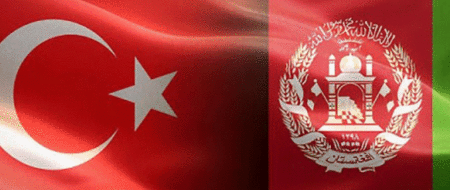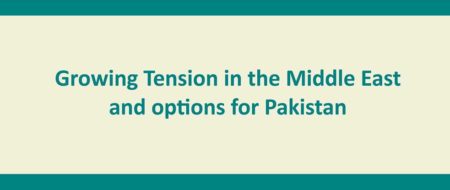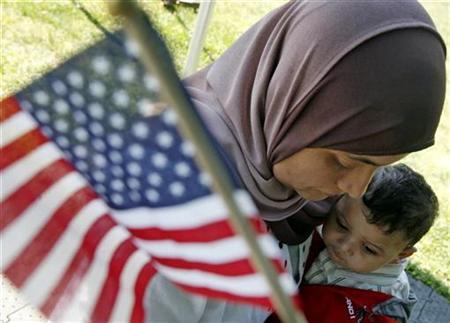NATO, Afghanistan and the Region
The presence of NATO in Afghanistan has far reaching consequences for the regional security.
Policy Perspectives, Volume5 , Number3, July-December 2008
Before going into the detailed analysis of the impact of NATO’s presence in Afghanistan on the region, it is necessary to discuss two important aspects of its presence – the real objectives and the issue of legitimacy of NATO’s being there. This in turn demands an enquiry at the wider perspective of the US agenda for this region which came into play post of disintegration of the Soviet Union and which 9/11 offered an ideal operatonalization for. Moreover, at a time when international law is and has been flouted left, right and center by the major powers, it assumes significance to actually see how legitimate the presence of NATO in this region is.
In fact, the activities of external powers in the region post of disintegration of the Soviet Union and the vacuum created by the establishment of a number of smaller states of Central Asia, which had comparatively weak state structure, reveal that the grad for energy resources had begun. The presence of Israel, which was one of the first states to come into this region with its oil and gas companies and so on, along with the US in the region, explains the motives behind the tempted alliance between Unocal and Taliban regime. Mr. Zalmai Khalilzad represented the interest of Unocal and brought Taliban to Washington to show them as very respectable leaders of the world. Interestingly, Hamid Karzai, the president of Afghanistan, also represented Unocal after his family shifted to United States.
This shows that the current political and strategic dynamics of present-day Afghanistan are not the result of 9/11; the roots can be traced back to a period of post soviet’s disintegration and that explain not only NATO’s presence in Afghanistan but also the reason for converting the UN mandated International security Assistance Force (ISAF) into NATO. It is interesting to note here that most of the countries that were present in ISAF were members of NATO. So this move raises some very genuine questions such as ‘what was the need to change ISAF into NATO?’ and ‘from where NATO acquires its legitimacy to operate in Afghanistan?’
This issue of legitimacy is critical because NATO has been expanding its mandate and operational milieu ever since the end of bipolarity. Not only has it increased its membership; it has also sought to transform the Alliance in terms of its strategic concept and functions. It has done this through the Partnership for Peace (PfP) concept primarily with Eastern European states and its programme of the Mediterranean Dialogue and recently the Istanbul Cooperation Initiative (ICI) — apart from its special arrangement with Russia.
However, in the context of Afghanistan there should be an issue of its legitimacy because it is an out of area operation. After all, NATO still remains, in legal terms, a collective defence organization as far as its legitimacy through the UN system is concerned under Chapter VIII, Articles 52 and 53, as well as Chapter VII’s notion of collective self defence as embodied in Article 51 .
However, regional collective defence organizations need to operate in the specific region of their membership since decision-making is restricted to this membership. Despite NATO expanding its functions and strategic concepts, its essential purpose as stated in its 1999 Strategic Concept remains ‘to safeguard the freedom and security of its members by political and military means’. And this continues to remain the prime focus of NATO as informed by all the NATO briefings from NATO Headquarters in Brussels as well as at SHAPE .
Given the continuing European-Atlantic membership of NATO, it is somewhat disturbing to see NATO transforming itself from a collective defence organization (Article 5 of the NATO Charter is surely in the context of collective defence?) to a collective security organization to serve the interest of its membership or perhaps future ‘coalitions of the willing’.
There is no legitimacy for any collective security organization other than the UN with its universal membership. Article 51 of the UN Charter provides a very clear and limited framework for collective defence organizations. Article 52 of the Charter relates to regional arrangements in connection with maintenance of peace and security and talks in terms of these organizations coming into being ‘as are appropriate for regional action.’ Also, under Article 53, there can be no action without authorization of the Security Council except against an enemy state as defined in Article 53:2.
So the question that remains unanswered is whether NATO is going to be an alternative to the UN system of collective security, peacekeeping, and so on — just as the notion of ‘coalitions of the willing’ is a direct alternative to the UN and its security Council? That NATO has the military capability while the UN may be lacking this is not the issue here since one is focusing on issues of legitimacy. In any case, the UN can be given more teeth if the members are prepared to do so and make effective Articles 43-47 of Chapter VII of the UN Charter, including the provisions relating to the creation of a Military Staff Committee .
Even within the context of regional organizations, actions have to have a UN mandate and this is where the case of Afghanistan is unclear. Post 9/11, the UN Security Council, through Resolution 1386 (December 2001), sanctioned the ISAF for Afghanistan. As stipulated in the Bonn Agreement of December 2001, the progressive expansion of the ISAF to other urban centres and other areas beyond Kabul was duly approved through follow-on UNSC Resolutions.
So where did NATO get into ISAF? Did the UNSC initiate NATO’s involvement or did NATO present a fait accompli to the UN Secretary General. Clearly, it was not any UNSC resolution that sought NATO involvement. Instead, what is available on record is that NATO informed the UN Secretary General, through a letter dated 2 October 2003 from its Secretary General, that on 11 August 2003 NATO had assumed ‘strategic command, control and coordination of the ISAF.’ This was followed by another letter from the NATO Secretary General to the UN Secretary General informing the latter of the North Atlantic Council’s agreement on a ‘longer-term strategy for NATO in its ISAF role in Afghanistan. Both these letters were sent to the President of the UNSC by the then UN Secretary General Kofi Annan on October 7 with the request that they be brought to the attention of the UNSC. So effectively NATO presented the UNSC with a fait accompli.
It was in the face of these developments that the UNSC passed Resolution 1510 on 13 October 2003 in which it acknowledged the 6 October NATO Secretary General’s letter as well as communication from the Afghan Minister for Foreign Affair and authorized the expansion of the ISAF mandate. But nowhere is there any reference to NATO’s role in Afghanistan. So is NATO’s really in Afghanistan because of UNSC resolutions?
Of course the UN allows regional organization to undertake military missions in their regional spheres but for NATO Afghanistan is an out of area operation — so effectively Europeans and Atlantic states are there to make decisions relating to the Asian region and this has far reaching consequences for all Asian states in the long run.
In the light of this development, it can be deduced that a war against transnational terrorism which had an international mandate has become an American war in Afghanistan because of the use of a collective defense organization like NATO, rather than its continuation with the UN mandated international force that was ISAF. The agenda is altering in the region and instead of being a part of the coalition to fight transnational terrorism, Iran and Pakistan are going to find themselves as targets of the US and NATO, for an agenda that is very little to do with terrorism and everything to do with energy and a redrawing of the region into a form, suited best to the US ambition. In this context, the notion that was put in the US by a retired American Intelligence officer, Ralph Peters, in the article ‘Blood Borders’ should be taken more seriously. So, the major question that arises is: how do regional powers see the European entity coming and making strategic decision about Asia?
Certainly Iran will have serious questions. Seemingly the Americans are more interested in using Pakistani base Shamsi is in Balochistan, which Pakistan provided to the US as part of the arrangement of war on terror. With their activities in Balochistan, it seems that the US is trying to use this base to destabilize Iran rather than using it in war on terror vis-à-vis Afghanistan. The neighbors of Afghanistan, especially Iran and Pakistan, have been crushed between extra regional land forces to the north of them and extra regional sea based forces to the south of them and wherever and whenever there is such a huge military presence of external forces in the region, stability becomes a far fetched dream by definition as every little incidence get blown up into a crisis situation.
On the other hand, there are certain moves by the US that show its inclination of bringing India into Afghanistan with some sort of its military presence there and making it a source of greater instability for Pakistan. There are already suspicions of Indian hand in the destabilization in Balochistan.
Therefore, rising number of extra regional forces is not in the favor of regional peace and stability especially when one finds long-term Chinese fears of the presence of the United States and NATO on its borders. This is a strategic shift on which Chinese may not be making any statement publicly right now, yet they have concerns about their security with special reference to the development of Missile Defense Program by the US and its allies, including India, that would totally shift the dynamics of not only China’s and Pakistan’s strategic nuclear considerations but also increase a pressure on Iran to build up a strong military capability. Russia’s reassertion in Georgia seems to be the manifestation of the outcome of this pressure of external forces in the region through which Russia is trying to reclaim the space lost in Central Asia, particularly in the post 9/11 scenario. It can be argued that more incidents of this kind might be seen in future from other regional powers as well.
In this scenario, it is interesting to note that Inter-Services Intelligence (ISI) of Pakistan has been accused of causing instability in the region by maintaining links with non-state actors operating in the area whereas a decade earlier the CIA had strong links with them as well. One may ask if America deemed it necessary to destabilize the Tribal Areas and the Frontier province for its own political and strategic interest in the region, it has equally affective links and mechanism to use these established contacts. Some journalists, who have been working in Swat, have talked about a number of American visitors staying in the area for the last two years. It is also an established fact that Maulana Fazlullah was a detainee with the US, before coming to Pakistan in 2007 and after his arrival, a huge problem of law and order and complex security issues emerged in the areas of swat in Pakistan. Some argue that he was released with the particular agenda of destabilizing Pakistan.
The crucial questions here are why the CIA-ISI fall-out appears now when nothing has changed drastically in the structure of ISI over the last six months or a year and why there is a sudden out burst of propaganda and writing in the American media about the ISI? The allegations or accusations on ISI may be coming up because the agenda of CIA in the region was not acceptable or tenable for ISI in Pakistan’s interest and the CIA seems to want to target the people who were for weakening the presence of latter in these areas.
· Dr. Shireen M. Mazari is senior security analyst. This comment is a revised and updated version of an earlier article on the same subject.
- Nothing in the present Charter precludes the existence of regional arrangements or agencies for dealing with such matters relating to the maintenance of international peace and security as are appropriate for regional action provided that such arrangements or agencies and their activities are consistent with the Purposes of the United Nations.
- The Members of the United Nations entering into such arrangements or constituting such agencies shall make every effort to achieve pacific settlement of local disputes through such regional arrangements or by such regional agencies before referring them to the Security Council.
- The Security Council shall encourage the development of pacific settlement of local disputes through such regional arrangements or by such regional agencies either on the initiative of the states concerned or by reference from the Security Council.
- This Article in no way impairs the application of Articles 34 and 35.
Article 53
-
The Security Council shall, where appropriate, utilize such regional arrangements or agencies for enforcement action under its authority. But no enforcement action shall be taken under regional arrangements or by regional agencies without the authorization of the Security Council, with the exception of measures against any enemy state, as defined in paragraph 2 of this Article, provided for pursuant to Article 107 or in regional arrangements directed against renewal of aggressive policy on the part of any such state, until such time as the Organization may, on request of the Governments concerned, be charged with the responsibility for preventing further aggression by such a state.
-
The term enemy state as used in paragraph 1 of this Article applies to any state, which during the Second World War has been an enemy of any signatory of the present Charter.
NATO Office of Information and Press, “Chapter 2: The Transformation of the Alliance,” NATO Handbook, 2001, Brussels. http://www.nato.int/docu/handbook/2001/pdf/handbook.pdf
Article 5
The Parties agree that an armed attack against one or more of them in Europe or North America shall be considered an attack against them all and consequently they agree that, if such an armed attack occurs, each of them, in exercise of the right of individual or collective self-defence recognised by Article 51 of the Charter of the United Nations, will assist the Party or Parties so attacked by taking forthwith, individually and in concert with the other Parties, such action as it deems necessary, including the use of armed force, to restore and maintain the security of the North Atlantic area.
Any such armed attack and all measures taken as a result thereof shall immediately be reported to the Security Council. Such measures shall be terminated when the Security Council has taken the measures necessary to restore and maintain international peace and security.
-
All Members of the United Nations, in order to contribute to the maintenance of international peace and security, undertake to make available to the Security Council, on its call and in accordance with a special agreement or agreements, armed forces, assistance, and facilities, including rights of passage, necessary for the purpose of maintaining international peace and security.
-
Such arrangement or agreements shall govern the numbers and types of forces, their degree of readiness and general location, and the nature of the facilities and assistance to be provided.
-
The agreement or agreements shall be concluded between the Security Council and Members or between the Security Council and group of Members and shall be subject to ratification by the signatory states in accordance with their respective constitutional processes.
Article 44
Article 45
Article 46
Article 47
-
There shall be established a Military Staff Committee to advise and assist the Security Council on all questions relating to the Security Council’s military requirements for the maintenance of international peace and security, the employment and command of forces placed at its disposal, the regulation of armaments, and possible disarmament.
-
The Military Staff Committee shall consist of the Chiefs of Staff of the permanent members of the Security Council or their representatives. Any Member of the United Nations not permanently represented on the Committee shall be invited by the Committee to be associated with it when the efficient discharge of the Committee’s responsibilities requires the participation of the Member in its work.
-
The Military Staff Committee shall be responsible under the Security Council for the strategic direction of any armed forces placed at the disposal of the Security Council. Questions relating to the command of such forces shall be worked out subsequently.
-
The Military Staff Committee, with the authorization of the Security Council and after consultation with appropriate regional agencies, may establish regional sub-committees.
Ralph Peters, “Blood Borders: How a better Middle East would look,” Armed Forces Journal, June 2006 Issue, http://www.armedforcesjournal.com/2006/06/1833899/





